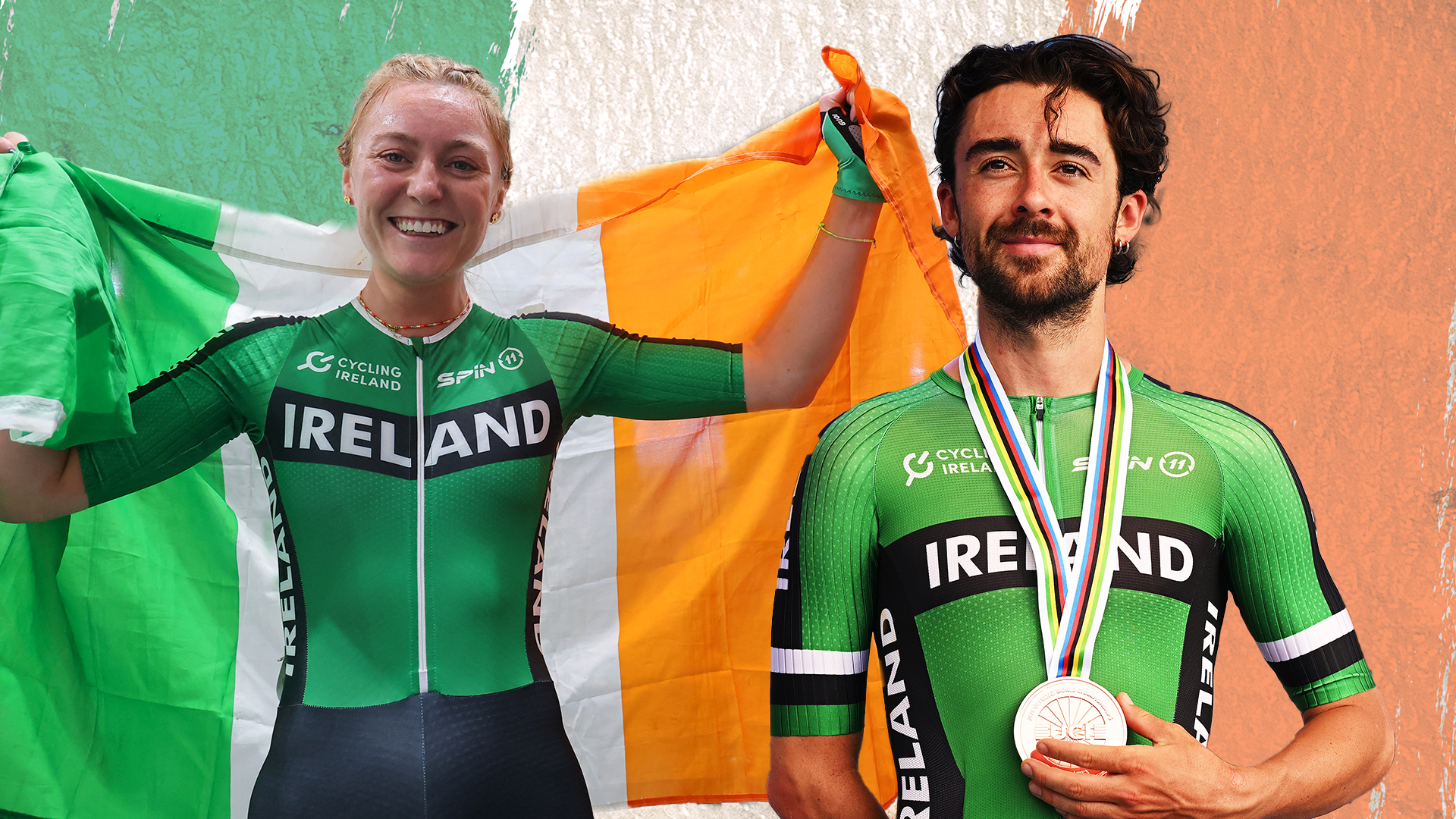You’ve come a long way, baby - Vital statistics show sea change in women’s cycling
Was the Tour de France Femmes a watershed moment, or a cherry on top for a cultural shift that has already taken place?
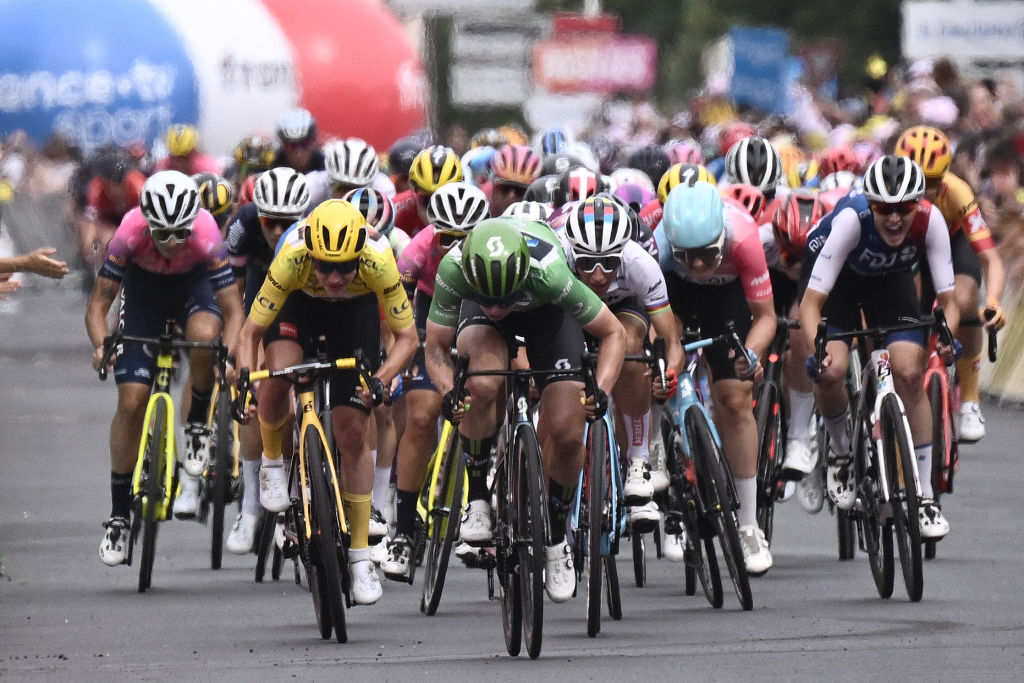
The dust has settled on the white gravel roads that played host to a stage of the first official women’s Tour de France in over thirty years. The publicity caravan vehicles are back in storage and the riders are on to their next round of races.
For those who’ve spent years campaigning for a women’s event with the same iconic clout as the Tour de France, it’s still hard to believe that ASO (which owns and runs the race) really, finally did what they claimed for so long was, for economic and logistical reasons, an impossible ask.
It was thanks to a 2013 campaign led by riders Kathryn Bertine, Marianne Vos and Emma Pooley, and Ironman triathlete Chrissie Wellington and a petition that raised more than 97,000 signatures that ASO finally created La Course. This one-day race held during the Tour occasionally stretched to two days and struggled to know what it was. Was it a cobbled criterium on the Champs Elysées? A one-day race in the mountains? A devil-take-the hindmost mountain TT hybrid?
Whatever it was, it ran for eight years, but never evolved into a proper stage race as riders, campaigners and fans had hoped.
A second wave campaign was led by Donnons des Elles au Vélo, which roughly translates as ‘Let’s give cycling some women’, but which is also a pun on ‘let’s give cycling wings’. This was organised by a group of primarily French cyclists from a club in the Parisian suburb of Courcouronnes and began in 2015 but really gained traction from 2018 onwards. The women, who are joined by riders from abroad, rode the entire route of the Tour de France a day ahead of the race, in order to demonstrate that women are perfectly capable of confronting the same long distances and difficulties, over three weeks, as the men. The extensive press coverage their campaign generated in the mainstream media—where the debate over the pros and cons of a three-week women’s race was much less nuanced—had the effect of making ASO look like its directors were still stuck in a 1980s time warp.
The impression that the ASO simply didn’t care, and perhaps only grudgingly ran La Course, was reinforced by the scant attention paid to the race by the French sports newspaper l’Equipe, which belongs to the same business empire. By 2019, La Course had become one of the most prestigious one day races on the women’s calendar, yet when Annemiek van Vleuten won it in thrilling style by chasing down Anna van der Breggen, the following day’s print edition offered a mere two paragraph summary. The assumption was that readers would be more interested in a couple of columns of coverage of a tiresome spat between two has-beens of the Armstrong doping era.
So when, that same summer, Tour de France director Christian Prudhomme suddenly announced that ASO were seriously considering options for creating a women’s version of the race, there was a general mood of ‘we’ll believe it when we see it’ in campaigners’ responses. And when the race details were finally revealed at the Tour de France presentation last year, with the news that it would deliver far more than a cursory three stages like the women’s Vuelta (also organised by ASO) most of the stakeholders in women’s racing were left, for want of a better word, gobsmacked. This was eight stages, with gravel and two big days in the mountains, a major sponsor in the shape of Zwift and with a celebrity race director in the shape of TV commentator and ex-rider, Marion Rousse.
The latest race content, interviews, features, reviews and expert buying guides, direct to your inbox!
Does the Tour de France Femmes avec Zwift mark a watershed moment in women’s racing? Or is it the icing on the cake of a cultural shift that has already happened?
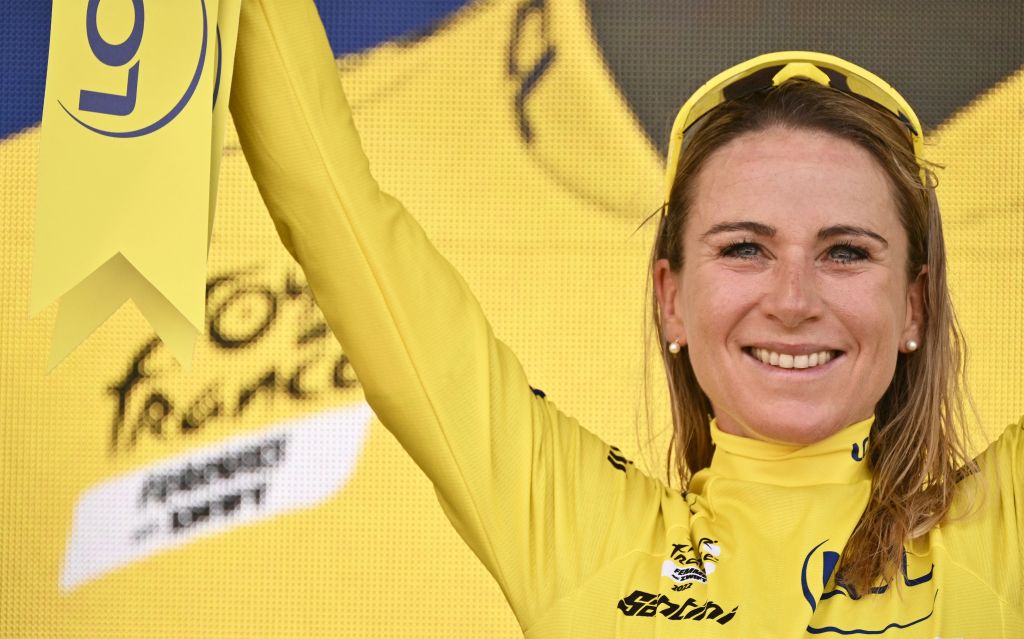
Anyone who has followed women’s racing over the last five, ten years, will know that the sport has changed, almost beyond recognition. While there is still a very long way to go to achieve a fairer balance in terms of challenges, broadcast coverage, financial security and prize money, the very idea of striving for parity is no longer laughed off as a childish fantasy. The Overton window has shifted, and women’s racing has become an important part of the narrative in the cycling media in a way that was unimaginable even five years ago.
Perhaps the most striking illustration of that came at the end of last year when Deceuninck-QuickStep team boss Patrick Lefevere went from declaring, “I’m not a welfare centre” when asked if he’d create a women’s team, to shortly afterwards announcing his intentions of developing a team that could join the WWT ranks from 2023 onwards. Such a dramatic turn of events would simply have been inconceivable, even two years ago. What triggered the change of heart? Money. Or, more precisely, a sponsor defection, with Deceuninck, a Belgian window manufacturer, taking its cash to another Belgian team, Alpecin-Fenix (now Alpecin-Deceuninck) and explaining to press the decision was made as a result of the other team’s commitment to developing a strong women’s team.
Lefevere’s team is about as macho as men’s teams get—they call themselves the Wolfpack, and struggle to make meaningful apologies for riders’ transgressions (remember Iljo Keisse’s lewd gesture behind a waitress). So when the boss starts making favourable comments about women’s racing, something’s up.
The hope with the Tour de France Femmes avec Zwift is that it will bring women’s racing to the next level, attracting a much wider audience, the same one that tunes in once a year in July, makes a day of it with a road-side picnic, and whose kids dream at night of one day wearing a yellow, green or polka dot jersey. It’s also this huge yet casual audience, that is neither predominantly male or female, young nor old, that cycling’s biggest sponsors hope to reach in order to sell bathroom fixtures, bank accounts, budget hotel accommodation, snacks, detergent, theme parks and flooring. Without these sponsors, professional bike racing wouldn’t exist.
#MeToo
Many factors have contributed to the growing interest in the women’s side of the sport, but there are certainly key moments and decisions that have acted as catalysts. The #MeToo movement that began in 2006 and reached a peak in 2017 when numerous allegations emerged of Hollywood producer Harvey Weinstein’s crimes of sexual abuse, has had a dramatic impact on women’s sport in general, with high profile athletes talking about their own experiences with abusive coaches. In a broader sense, it put a magnifying glass on the male chauvinism that has slowed the natural progress of so many women’s sports, amongst which cycling seems particularly affected. Consider the 1984 Olympics, which marked the first women’s cycling event with a road race, but also the first marathon for female runners and a key stage in the reintroduction, after a very long hiatus, of women’s and men’s tennis. If we take that Olympics as a ‘year zero’ for those sports, how is it that women’s tennis and distance running have progressed to the point where the great champions are household names with lucrative sponsorship deals, yet non cycling fans struggle to name even one great female rider?
#MeToo has made a significant difference to the way women’s sport is seen and consumed. The first time the French introduced a women’s award at the celebrated ‘Ballon d’Or’ end of year event for footballers in 2018, winner Ada Hegeberg was asked by the event’s DJ if she “knew how to twerk” to which she replied “no” and appeared ready to leave the stage. The storm that followed in the press and on social media suggested a watershed moment: no, you can no longer reduce supreme sports women to the status of decorative eye-candy for men to lust over, and expect to get away with it.
And who remembers the days in the early 2000s when women’s team riders were photographed like calendar girls, with heavy eye makeup and blow-dried hair, and asked to pose provocatively? Who remembers the time when conventionally pretty riders got more media attention than those who were less photogenic, yet had achieved significantly more?
The changing media landscape
In 2016 the Guardian conducted a survey during Women’s Sports Week which found that only 1.8% of all the articles that appeared in the sports pages of the national newspapers that week had been written by women, and that out of 1,899 photographs published in those same pages, only 3.4% were of women. When the Daily Telegraph became the first broadsheet newspaper to dedicate an entire supplement to women’s sport in 2019, creating a space for in-depth interviews and reports, it was another signifier of an important cultural shift.
The Telegraph’s commitment to women’s sport has been accompanied by a more subtle yet influential decision in most parts of the cycling press to devote more attention to women’s racing, by appointing dedicated editors, doing women-themed issues, or simply increasing the amount of coverage of the sport. In parallel with this trend we’ve seen an increased presence of women’s voices within cycling journalism. Whereas only a few years ago women were a rarity in the Tour de France press room, a quick head count on stage four of the Tour de France Femmes revealed 39 men and 16 women – or a ratio of around 5:2.
Of course, we’re not in some segregated 1950s school situation where the boys sit on one side of the class with their woodwork and the girls sit on the other side with their knitting. Thankfully there are women reporting on men’s races and men reporting on women’s races – giving cycling journalism an increasingly rich timbre of voices and opinions. Simply having the women’s presence in the room is helping to change the culture.
Have loved working with these ladies this week. #TDFF pic.twitter.com/7LoaUMHo98July 30, 2022
And the important point about the increased coverage of women’s racing, is that people are reading it.
Nine years ago, I remember having a discussion with a British cycling magazine about the idea of doing an entire issue dedicated to women’s racing. I worked up an issue’s worth of suggestions, and together with a receptive editor there was a period of back-and forth, pooling and fine-tuning ideas. But in the end word came back that the publisher wouldn’t go for it, because ‘it would never sell’. Last year, however, when Rouleur Magazine finally dedicated an entire issue to women, guest-edited by the TV presenter and cycling journalist Orla Chennaoui, it became the magazine’s biggest-selling issue, going into three print runs. That level of interest was not a one-off. As Chennaoui recently reported in the same magazine, its newsletter devoted to Paris Roubaix Femmes had some the highest levels of engagement of any of the digital stories in the magazine’s history. The interest is there.
Cyclingnews' Women's Editor Kirsten Frattini coordinates global women's cycling coverage, and has overseen significant growth in the past five years alone, notably the publication's women's cycling content has seen record annual figures that more than doubled in 2021.
Print is one thing, but it can only go so far. The most interesting evidence of a shift comes from watching the effect of increased TV coverage of women’s racing.
Finding an audience on television
As Daam van Reeth, an Associate Professor of Economics at the University of Louvain points out in his forthcoming book, The Economics of Professional Road Cycling (Springer, October 2022): “Up to 2014, in most European countries at best three women’s races a year were being covered live on TV: the World Championships road race, the National Championships road race and, every four years, the Olympic road race. Other top women’s races just got a short summary broadcast at best, before or after the men’s competition had finished. The introduction of La Course (2014) and the Madrid Challenge (2015), broadcast to a worldwide audience under the umbrella of, respectively, the Tour de France and the Vuelta a España, was the first sign of change.”
In 2016, the UCI replaced the Women’s World Cup with the World Tour, creating a two-tier system in racing with the more prestigious races required to provide at least 45 minutes of broadcast coverage.
By 2018, Eurosport covered 15 out of the 22 women’s World Tour races reaching a cumulative total of 5 million viewers across all its territories. By 2021, in some European countries you could watch around 12 women’s races on public service channels. [1]
The UCI stipulating that WWT races must now be broadcast and policing that decision by stripping last year’s Giro Donne of its WWT status when it failed to provide enough coverage, has been critical. How can you become a fan if you can’t even watch a race?
Van Reeth regularly posts broadcast figures for men’s and women’s races on Twitter, particularly for The Netherlands and Belgium. From time to time the women’s events draw greater viewer figures than the men’s, but even when they don’t, the audiences are usually within a range of 60% to 90% of the men’s, which is remarkable given how much less the women’s peloton is known, with the consequence that the narratives of its rivalries are less familiar. Even more remarkably, in cyclo-cross the women’s races routinely attract bigger TV audiences in Belgium than the men’s. Perhaps just as astonishingly, the demographic watching these women’s races is predominantly older men: the very audience you might be forgiven for assuming as least engaged in women’s sport. This demographic applies to men’s racing too, which suggests that if the audience is the same, then where fans are concerned, cycling is not a segregated sport. Or in other words, women’s racing isn’t only of interest to women and teenage girls, as is often assumed.
It also suggests that the audience for racing on TV, which drives sponsorship, will dwindle as it gets older and that the economy of cycling needs to urgently figure out new ways of engaging younger audiences if it wants to thrive in the future.
It’s worth pointing out here that the women’s peloton has been quick to embrace the possibilities of social media, having been largely ignored by the traditional sports media for more than 100 years... If we find that the role of social media will become increasingly important in the economy of bike racing, then women are already in pole position to profit from that shift. Today’s female riders are finding an audience directly on Twitter and Instagram, posting training clips, selfies, jokes and stories from within their races. Even if you’d never watched Cecilie Uttrup Ludwig’s punchy way of racing prior to her magnificent stage 3 victory at the Tour de France Femmes, you would surely have come across her comic, emotional and endearing post-race interviews, the material for a thousand memes.
To return to the TV statistics, however, it’s necessary to remember that they rarely tell the whole story when quoted in isolation. Van Reeth points out that that external factors can influence viewer figures, beyond an audience’s desire to watch a race. More people watch TV on Sundays than on Saturdays, for example, so when events like the World Championships schedule women’s events on a Saturday and the men’s on a Sunday, the data may not be an entirely fair reflection of interest.
Furthermore, not all TV coverage is equal. When viewers can only watch a race via a paid subscription service, viewer figures are much lower. Van Reeth offers a dramatic illustration of this point with the French data for Milan-San Remo in 2021. In 2020 the race was free to watch on La Chaine l’Equipe: in 2021 it could only be watched via a paid subscription service with Eurosport Player. As a consequence, viewer figures dropped by more than 98%, from 1,073,000 to 20,000.
An experiment with scheduling conducted in 2020 by Flanders Classics—organisers of the Ronde van Vlaanderen and Omloop Het Nieuwsblad amongst others—and the Belgian broadcaster Sporza, saw the men’s and women’s races being held on the same day, but with the men finishing first, rather than the women providing a morning ‘appetizer’ which has historically been the norm when organisers run men’s and women’s events on the same day. That year, the Ronde van Vlaanderen recorded the highest ever viewer figures in Flanders for a women’s race. What’s more, only five men’s races had higher viewer figures that year. The Dutch national broadcaster NPO1 recorded an audience 41% larger for that same race than for the men’s race. In 2021 the Dutch TV audience for Omloop Het Nieuwsblad was more than two times larger for the women’s race than for the men’s.
All this demonstrates not only that there is an audience for women’s races on television, but also that decisions on how and when to broadcast them have a significant impact on audience engagement.
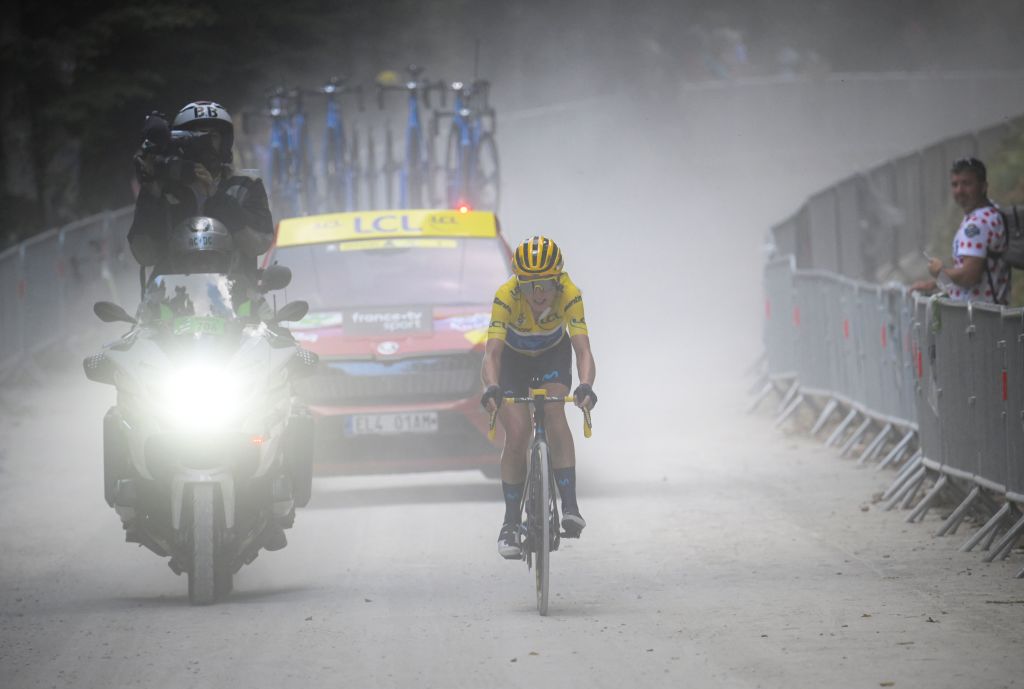
The UCI Minimum Wage
The broadcasting of women’s races is part of profound structural changes to women’s racing led by the UCI.
Perhaps the final key to this cultural shift, and the most recent and therefore all the more exciting, is the introduction of a minimum wage for female riders. The UCI introduced it in 2020 at the same time as the COVID-19 pandemic hit, making it an essential condition for any team seeking Women’s World Tour status. In 2020 it amounted to €15,000 a year, and it has risen every subsequent year to in 2023 reach €32,000, the same as for men’s Continental teams. While that initial tranche was below the national minimum wage for most European countries, there were many who feared it was too much, and that teams would disappear. Nonetheless, despite the pandemic and the many races cancelled as a consequence, eight teams committed to WWT status in 2020. This year, the number has risen to 14 teams.
It has been the norm, since women’s racing started to become professionalised in the 1980s, for women to work on the side in order to get by, with inevitable consequences on their racing form and mental well being as they juggled work with training and racing. When the men talk of the sacrifices they make for their sport, they don’t know the half of what women go through in order to ride at their best. Finally, with the UCI taking action on making sure at least a decent percentage of the women’s peloton gets a living wage, riders can properly devote themselves to training and recovery, and that in turn elevates their racing.
The minimum wage is part of a package of benefits, some of which are less publicised, but equally ground-breaking, allowing women to have longer careers, from covering the costs of health insurance, having a team doctor and offering a pension plan to providing paid maternity leave.
Rising inequality
There is still a long way to go, however: not for achieving parity with the men, which remains a distant and perhaps unachievable goal, but to simply reach a level of decency and fairness that will allow the women’s sport to fulfil its potential. While the Women's WorldTour is making a significant difference to some riders’ lives, the rest of the women’s peloton continues to struggle. A 2017 survey conducted by The Cyclists’ Alliance, a union for female riders, revealed that 17% of those surveyed earned nothing at all. Last year’s survey showed that number had increased to 34%. In 2017 50% of the riders surveyed earned €10,000 or less. In 2021 that number had marginally increased to 52%.
While the WWT team system works well for those lucky enough to get on it, the data gives a troubling indication that disparity is growing for those unable to make the leap, and it’s tempting to conclude that these differences were on display at the Tour de France Femmes avec Zwift, with a peloton riding at two, three or even four speeds.
Having a healthy economy with the second tier Continental teams is not only about doing the right thing for those professional riders, or for a more balanced and competitive peloton, but it’s also vital for the sport’s future, since those teams create a pathway for emerging talent to develop. And on a related note, there is still little in the way of an U23 category stepping stone for young riders to come up through. As the women’s peloton at its sharp end races faster and harder than ever before, the jump from junior to elite becomes increasingly daunting.
Equal prize money
The data that always causes headlines is the disparity in prize money for equivalent men’s and women’s races. In 2021, the debate resurfaced when Anna van der Breggen took home €930 after winning Omloop Het Nieuwsblad, a mere 5.8% of what Davide Ballerini got (€16,00). Yet as the CEO of Flanders Classics Tomas Van Den Spiegel has pointed out, equal prize money only benefits the winners, whereas his organisation has taken an ambitious bottom up approach to help grow the sport as a whole.
The more pressing priorities, he argues, are to offer broadcast coverage of races (which comes at a great cost to race organisers) and bringing the women’s races closer to the men’s in terms of difficulties and favourable time slots for TV audiences, as we’ve already seen. In this way, racing brings in a bigger audience and more sponsorship. His four year plan has been undeniably successful, and will culminate next season with an equal prize purse in the six one day races for men and women that Flanders Classics organise.
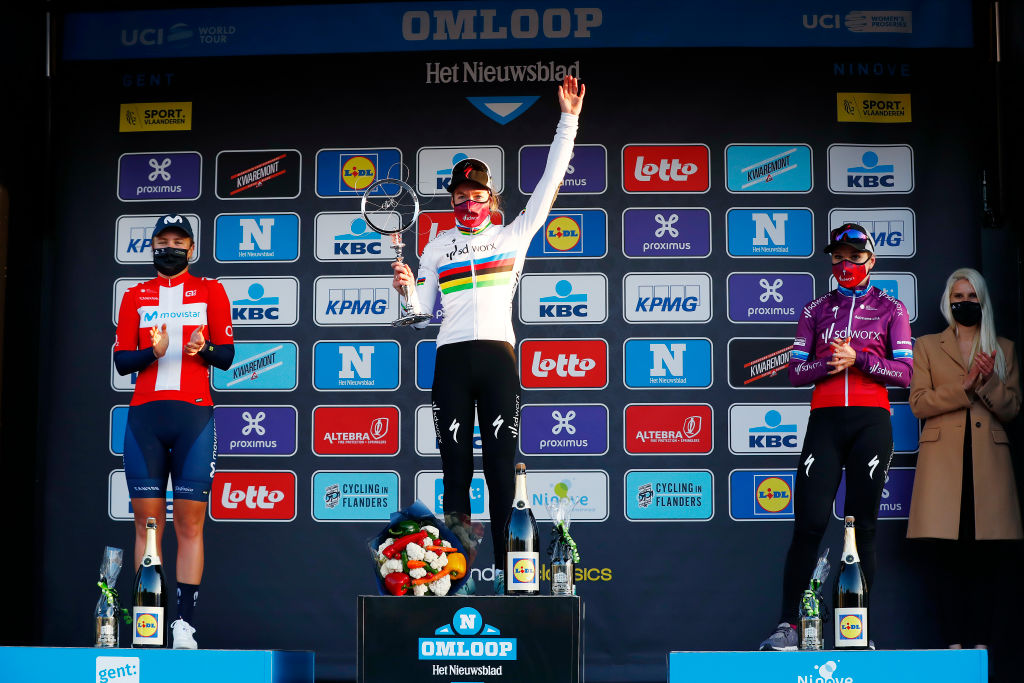
Sponsor investment
You may have noticed that the title for this piece is borrowed from the advertising slogan for the cigarette brand marketed at women, Virginia Slims. It was created in the late 1960s and made use of the civil rights movements in America to flatter its target market, creating the powerfully persuasive notion that every skinny cigarette you smoked was a poke in the eye of the patriarchy. Capitalism at its most shameful, one might argue, when we now know that tobacco companies had, since the 1950s, been perfectly aware of the links between smoking and lung cancer. By 1990, between 15%-20% of female deaths above the age of 30 in the USA, Canada and Ireland were attributable tobacco consumption.
But that same brand played a critical role in the development of women’s tennis, by sponsoring and supporting a breakaway women’s tour in America that was led by the great Billie Jean King, and which set to rectify the shocking disparity in prize funds between the men’s and women’s sports.
Just as the women’s Tour de France first emerged in 1984 on a wave of social change where feminism was becoming trendy rather than frighteningly radical, so this year’s Tour emerges at a moment where showing how much you’re doing to promote equality, inclusion and diversity makes a business look hip and ahead of the game. That’s not to deny that the executives behind those decisions may genuinely want to promote social change, but there are corporate image and branding benefits too.
As we’ve seen with Deceuninck, with the men’s teams who are now creating women’s teams, and with the arrival of Zwift as a major sponsor, these progressive brands with their sizeable wallets are accelerating change.
Their investment also goes beyond public relations. We’ve been told so often that women’s sport loses money, that the notion has become a ‘given’ in traditionally male-dominated disciplines. But is it actually true? The economy of men’s sports may be ten times the size or more of women’s sports, but for investors, they are also perceived as being at or near their peak. The idea that is increasingly gaining currency is that women’s sport is where the potential growth is, and the bonus for investors is that it’s extremely cheap.
As Dan Cohen, from the American sports marketing company Octagon recently told the Washington Post, “The stakeholders on the commercial side of sports are constantly searching for the next frontier, the next growth play. It is clearly women’s sports.” Meanwhile Kate Veronneau, Zwift’s Director of Women’s Strategy and a former pro cyclist herself, made the point that, “Women’s sports is trending hard because the companies that have invested in sports are seeing fabulous returns”.
Ultimately it’s the public that decides whether this race has been a success, and on that front, the signs confirm what campaigners have said all along: build it and they will come.
Cyclingnews reports that its engagement from the Tour de France Femmes was the highest in for any women's stage race in the website's history, and that its visits exceeded those for the men's Giro d'Italia. VeloNews also reported that reader engagement for this TDFF was higher than for the men’s Giro d’Italia this year. The Tour de France revealed the race had more than 5 million viewers and a 45.6% audience share on France Télévisions on the final stage of the race, while the race as whole reached 20 million viewers in France alone. On a more anecdotal level, the large crowds of spectators that we saw on the roadsides in the mountains and at the stage finishes show that the interest is definitely there. Of course, this race has all the novelty value of being a first edition. Will it struggle to achieve the same level of interest next year? Or will it have an even bigger audience?
Perhaps the clearest indicator of whether this race marks a turning point in women’s racing, will be if it correlates with a marked increase in engagement with other women’s races. For the moment we can only watch and wait.
Vital Statistics in women’s racing in 2022
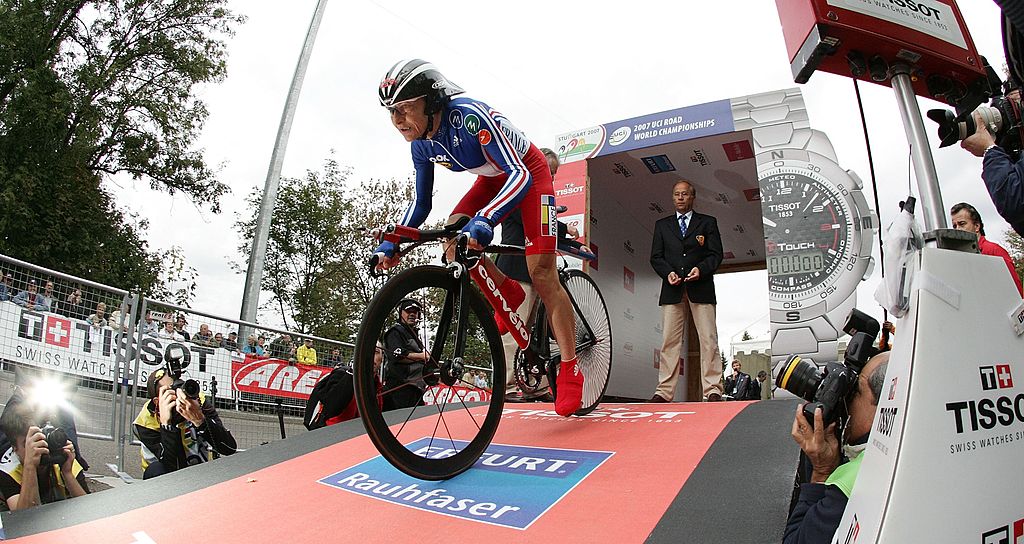
“The general public is interested in women’s sport. I keep saying it again and again. I believe the press has to understand that, and that they should be broadcasting the women’s sport as much as the men’s.” Jeannie Longo, talking on France 3 Alpes TV in 1992.
Financial metrics
Minimum Wage:
Year the UCI introduced a minimum wage with the creation of a UCI Women’s World Teams category: 2020
Minimum wage in 2020: €15,000
Minimum wage in 2023: €32,100
Number of UCI Women’s World Teams in 2020: 8
Number of UCI Women’s World Teams in 2022: 14
Percentage of UCI Women’s World Teams in 2022 which have either grown out of men’s teams or are connected to men’s teams: 64%
Number of teams which match their women’s and men’s starting salaries: 2 (Trek-Segafredo and Team Bike Exchange in 2021)
Year the French Cycling Federation first agreed to issue professional licences to top tier female road cyclists: 2021
Audience metrics
Instagram followers:
Men’s Giro d’Italia winner Jai Hindley: 45,000
Winner of the 2022 Women’s Giro Donne and Tour de France Femmes Annemiek van Vleuten: 152,000 (171,000 after 2022 TDFF)
2022 Tour winner Jonas Vingegaard: 159,000 (343,000 after 2022 TDF)
Defending Tour de France champion Tadej Pogačar: 655,000 (722,000 after 2022 TDF)
Women’s world champion Elisa Balsamo: 50,000
Men’s world champion Julian Alaphilippe: 888,000
Broadcasting data:
Number of WWT events with live coverage in 2016: 10
Number of women's World Tour races in 2018 that received live broadcast coverage: 15 out of 23
Number of minutes of live broadcast coverage a race needs to provide to have UCI Women’s World Tour status in 2022: 45
Number of UCI WWT races in 2022: 25
Days of racing in the UCI Women’s World Cup in 2015: 10
Days of racing in the UCI’s Women’s World Tour, introduced in 2016: 35
Days of WWT racing in 2022: 71
Amount of daily live coverage for the Giro Donne in 2021: 30 minutes
Amount of daily live coverage for the Giro Donne in 2022: 2 hours
Approximate worldwide live TV audiences calculated by Professor Daam Van Reeth based on data supplied by broadcasters over a ten-year period:
Tour de France: 15 – 20 million
Giro d’Italia/Vuelta a España: 4 – 6 million
Paris Nice: 1 – 2 million
Critérium du Dauphiné Libéré: 1 – 2 million
Tirreno-Adriatico: 1 – 2 million [2]
Average audience of TDFF on French TV alone: 2.25 million
Peak viewers in France on stage 8 of Tour de France Femmes avec Zwift on France 3: 5.1 million
Percentage increase of TV viewers of women’s races on Flemish TV, between 2019 and 2020: 70% [3]
Number of tweets in the last twelve months, in which Daam van Reeth (professor of Economics and Business at the KU Leuven with an interest in the economics of sport), has reported higher viewing figures in the Netherlands and Flanders for women’s races over men’s equivalent events: 9
Number of which were cyclo-cross: 6
Increase in British men taking an interest in women’s sport, from 2020 to 2021: 24%
Of that number, percentage of men who attribute their interest to broadcast coverage: 68% [4]
Percentage of viewers that follow live men’s Tour de France coverage for the pretty views: 61%
Percentage of viewers that follow live broadcast coverage of the men’s Tour de France for the racing: 32% [5]
Then and now
Year Alfonsina Strada became only woman to ride men’s Giro d’Italia: 1924
Number of stages: 12
Overall distance: 3,613km
Mean average distance of a stage: 301km
1984 Women’s Tour de France
Number of stages: 18
Longest stage: 77.8km
Overall distance: 1066.45km
Number of teams: 6
Number of riders: 36
Average speed: 35.967 km/h
Women’s Tour de France 1985, featuring riders who had been at Olympics in 1984
Number of stages: 12 (race A) & 5 (race B) for a total of 17
Longest stage: 104km
Distance: 1230.5km
Number of teams: 12
Number of riders: 72
Average speed: 33.708 km/h
1990 Ore Ida Women’s Challenge, Idaho, USA, the second longest women’s stage race ever held, after the 1984 Tour.
Number of stages: 17
Longest stage: 129 km
Overall distance: 1007km
Number of teams: 17
Number of riders: 68
Average speed: 37.29 km/h
2022 Giro Donne
Number of stages: 10
Longest stage: 126.1 km
Overall distance: 1019km
Number of teams: 24
Number of riders: 144
Average speed: 37.133 km/h
Tour de France Femmes avec Zwift 2022
Number of stages: 8
Longest stage: 175km
Overall distance: 1032.7 km
Number of teams: 24
Number of riders: 144
Average speed: 38.382 km/h
Prize money
Year Lizzie Deignan (then Armitstead) received £2,000 for winning the world championship road race and Peter Sagan received £20,000 for the men's race: 2015
Prize money for Lizzie Deignan’s Paris Roubaix victory 2021: €1,535
Percentage above minimum amount mandated by the UCI: 0
Prize money for Sonny Colbrelli’s Paris Roubaix victory 2021: €30,000
Percentage above minimum amount mandated by the UCI: 33%
Overall prize purse for women’s Amstel Gold race in 2021: €10,000
Overall prize purse for women’s Amstel Gold race in 2022: €40,000 (bringing it in line with the men’s race).
Prize money for overall Giro Donne winner Marianne Vos in 2014: €535
Prize money for overall Giro d’Italia winner Nairo Quintana in 2014: €200,000
Overall prize purse for the Giro Donne in 2022: €250,000
Prize money for overall winner Annemiek van Vleuten: €50,000
Overall prize purse for the Tour de France Femmes avec Zwift in 2022: €250,000
Prize money for overall winner: €50,000
Overall prize purse for the men’s Tour de France 2022: €2.2 million
Prize money for overall winner: €500,000
Overall prize purse for the HP Women’s Challenge in 1998, the pre-eminent women’s stage race in America: $125,000 (the biggest of all US races at the time, for both men and women)
Isabel Best is the author of 'Queens of Pain: Legends and Rebels of Cycling', and has contributed to Cyclingnews with feature stories 'Vital Statistics', 'Can women race a three-week Grand Tour?', 'International Women's Day: 7 remarkable women who made their mark on cycling's history', and Racing below the breadline: The women’s cycling omertà.
Footnotes
1) From ‘The Economics of Professional Road Cycling’ by Daam Van Reeth, to be published by Springer in October 2022
2) Statistics calculated by Daam Van Reeth in his forthcoming book ‘The Economics of Professional Road Cycling’, in which he also explains the complexities of calculating viewer figures, and the frequently misleading data provided by race organisers.
3) From ‘The Economics of Professional Road Cycling’ by Daam Van Reeth
4) ‘Women's Sport: Bouncing Back from the Pandemic?’ report published by Sky Sports and Leaders in Sport in 2021
5) Statistics compiled by www.sportlab-consulting.com and cited in Daam Van Reeth’s forthcoming book ‘The Economics of Professional Road Cycling’.
